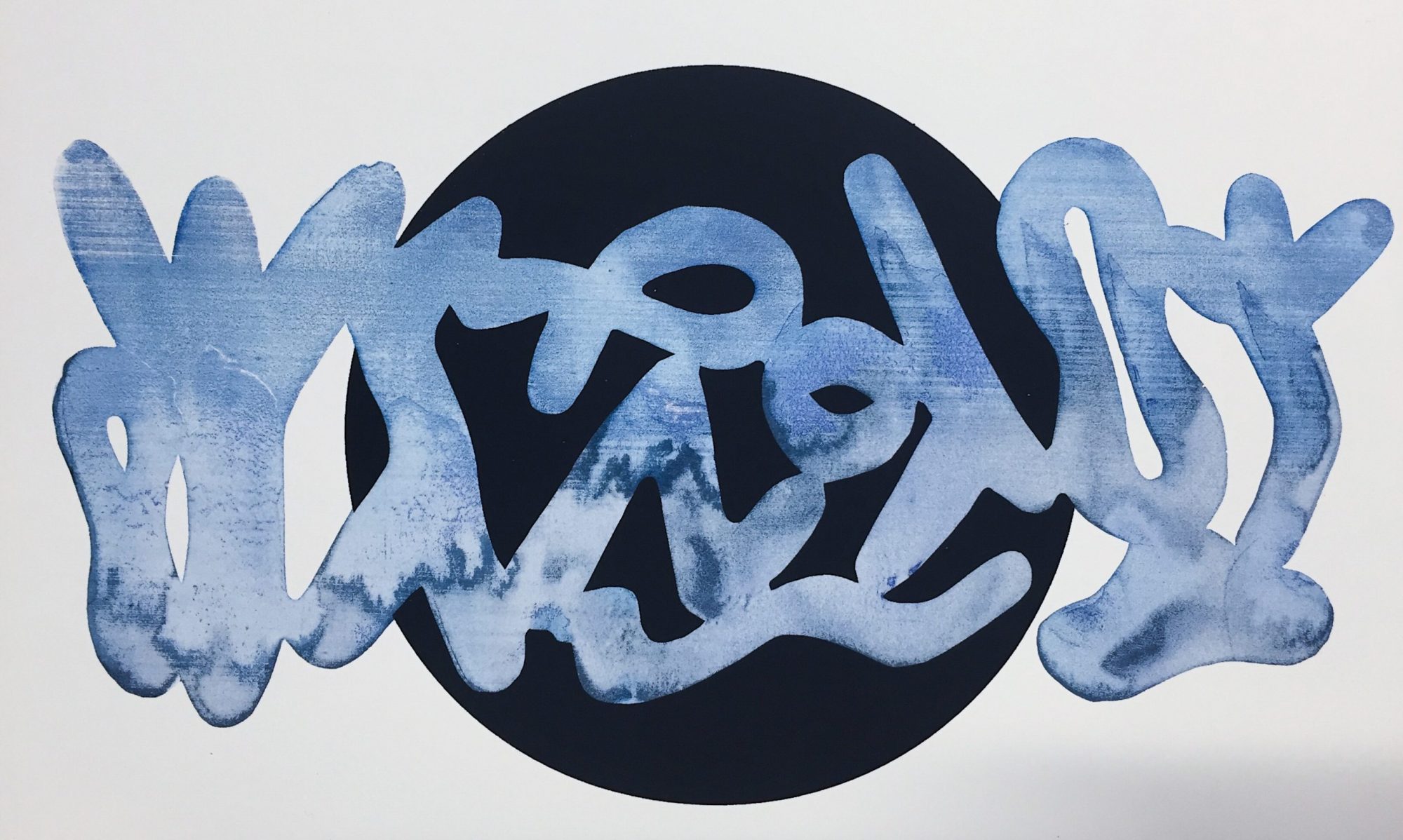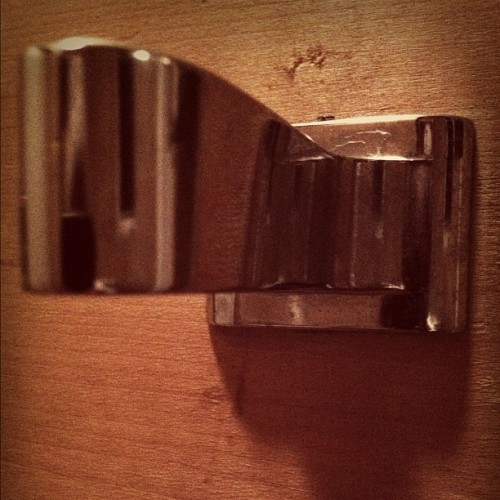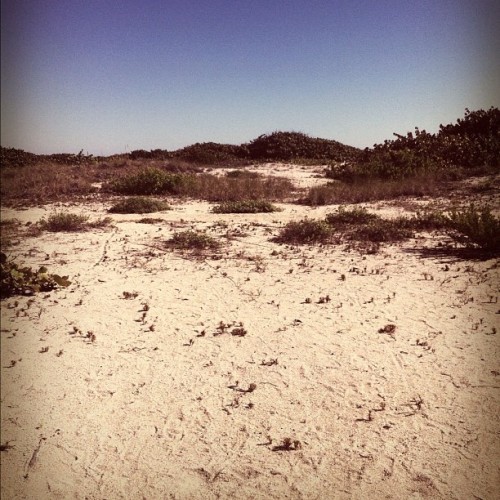ONAJIDE SHABAKA is a visual artist living in Miami. His recent exhibitions and projects have included: “Antillean Lacunae,” at the Little Haiti Cultural Center, Dec., 2016-Feb., 2017; “Nature/Nurture,” at Salisbury University, Salisbury, MD; a residency in the Iron Range of Boundary Waters, MN; and “Dirt Yuta Suelo Udongo Te,” an exhibition he curated at Florida Atlantic University in Boca Raton, 2015.
www: art3st.com
Twitter: @onajide
Instagram: @onajide
In 1972 I was a student at California College of the Arts in Oakland, CA. A requirement of the freshman student’s core curriculum included sculpture. I researched non-European sources to begin my project and discovered wood carving from the Maroons who had escaped slavery in the South American country of Suriname, fleeing into the jungle and mingling with indigenous peoples. Their syncretic wood carving reflected a synthesis between their West African origins and their new home. Although it may have been my dream to actually visit the country, it eventually receded in my mind to the point of being forgotten until 2016, when I was standing in front of a group of young people in the city of Moengo, Suriname as part of the Diaspora Vibe Cultural Arts Incubator (DVCAI) International Culture Exchange (ICE).
Since 1989 my art practice has focused primarily on ethnobotany, geology, and archeology as they relate to human history, society, and culture. The 2016 Suriname experience whetted my appetite for a more engaged time to investigate some of the things that my memory had resurrected, so during the following nine months I worked with DVCAI and Tigertail Productions in Miami and ReadyTex Gallery and local artist Kurt Nahar in Paramaribo, Suriname to create a month-long residency for myself where a residency program did not exist.
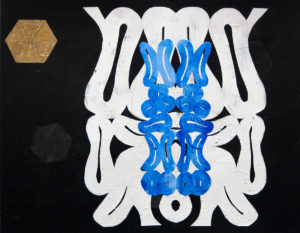
mixed media on paper
11 x 14 in. / 27.9 x 35.6 cm
© 2017
During those nine months I researched the relationships between colonial countries and the African slave populations they imported and moved around. It’s not widely known, but slaves were imported to specific parts of the Americas based on their knowledge of crop cultivation where centuries of experience meant their expertise was greater than the colonialists. I wanted to find a single crop that was grown in both North and South America, including the Caribbean, that could tie together this vast botanical project into something more concise while still encompassing the vastness of time and space that I was dealing with: spanning oceans and several centuries.
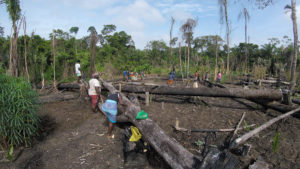
(film still)
Rice was the crop I discovered and it became central to my project. Rice also allowed me to look at the historical timeline of industrial crop monoculture in Lowcountry South Carolina for interesting parallels in Suriname, since the colonial Dutch brought slaves from the same ports in West Africa to do the same work in a similar environment. Along the west African coast, rice was grown among the mangroves using a method called tidal cultivation. This was the first method used in both regions, before the slave population had to cut down the mangroves to expand growing areas. The key to making it work was their expertise in building embankments to prevent salt water incursions and working with the tides to ensure a fresh water supply. With this highly skilled population, the colonial system was able to survive until the later importation of Asian rice (oryza sativa, which grows faster than African rice, oryza glaberrima).
Rice was not planted in Portugal, England or Holland at the time when Brazil, South Carolina and Suriname were made colonies. Nonetheless, plantation owners have traditionally taken credit for the crop’s introduction and establishment. Descendants of runaway slaves in the Guianas, however, hold a contrasting view. They attribute the introduction of rice to an enslaved African woman.
When African slaves were first taken to Suriname from the Senegal-Gambia-Ivory Coast region, traditional rice growing areas, seeds of rice and other crops were hidden in the hair of captured women. Rice and various other food crops from West Africa found their way to a number of regions throughout the greater Caribbean from the southern US to Central and South America.
From Suriname to Cayenne and across the Amazon to the Brazilian states of Amapa, Para and Maranhao, an oral tradition claims that an African woman introduced rice by hiding grains in her hair. The precious seeds escaped detection and this, they explain, is how rice came to be planted. Even the rice plantation economy of colonial South Carolina suggests a similar account. In 1726 Swiss correspondent, Jean Watt, noted that ‘It was by a woman that rice was transplanted into Carolina’.
So, how has this project been developed within my practice?
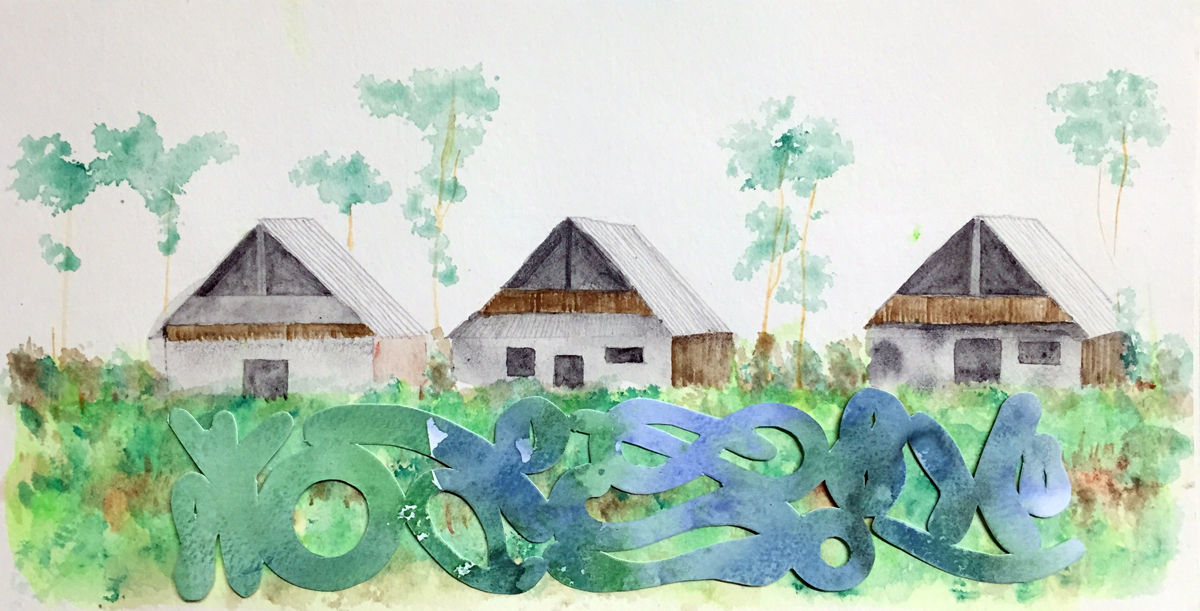
Food talks about who we are as people, encompassing our personal and collective history. Because rice is the planet’s most widely eaten grain, I think a lot about cuisine as cultural and historical expression. Suriname is a country with many cultural influences, including African and Asian. It is not like “rice smuggled in hair”, for instance, results in a specific or directly translated image, form, or manifestation in my work. I create things tangentially, without trying to force a specific reading, although I hope that certain elements can be picked up, read, and understood. My visual and material culture research has so far resulted in various referential cues, or clues, to historical moments or sites I find interesting. The ethnobotanical crops and wild plants map out human and animal migrations over several hundred years. These plants have allowed humans to live in places they were unfamiliar with during the slave era but also provided them sustenance and health when medical physicians were not available or affordable.
Returning to the studio, I have taken some time to organize and develop some ideas about how to share this project. I began creating a few pieces, and out of these ideas I have started working on an artist book: a combination of photographic images, printmaking, and laser cut pages. There are collage works on paper, and I will make a few textile pieces as well, but my studio is small so I don’t have room to keep different in-process works out to work on at any moment. The creative process has been slow because each serpentine piece I’m working on—influenced by Maroon wood carvings—is painted, drawn, scanned, matched to something that fits, collaged, and then scanned again. If it doesn’t fit I have to draw and paint another, hence the consumption of time. The book is coming along nicely, and should be finished in 2018.
